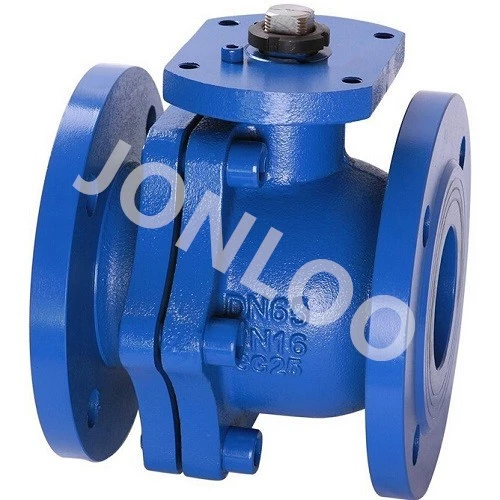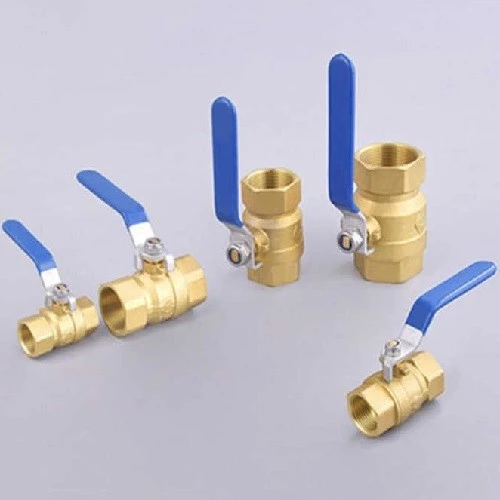Ball valves exist in four standard forms, but they all work on the same principle.
As the name suggests, standard port ball valves are ball valves with standard sizes. Because they are smaller than the pipe, there is a tiny limitation in the fluid's flow. The majority of systems use this as the standard style.
On the other hand, full port ball valves include large balls that completely fill the port, leaving a hole the same size as the pipeline. This permits reduced friction loss and unhindered flow, but necessitates a larger, more costly, heavier valve.
The v-shaped ball or seat of a V port ball valve is the same. As a result, the system might have a more controlled and stable flow. Due to the high flow intensity, the valves need a significantly more robust design.
Trunnion ball valves have an anchor at the top or bottom, in contrast to other designs that have free-floating balls. Systems with high pressure are intended to employ them.
The four main materials used in ball valves are carbon steel, cast iron, stainless steel, and brass ball valves, in addition to the four main types. They are all useful and have their own benefits. The guide to the different resources is provided below. Carbon steel ball valves are still a good choice even if they don't have the same glare as stainless steel ball valves. Although carbon steel is thought to be of lower grade than stainless steel, the difference is not that great. The valves have a lower melting point and reduced chemical resistance. They do, however, have the notable benefit of being more malleable, which makes installation simpler and expands their application options. Moreover, carbon steel distributes heat far more strongly than stainless steel. Carbon steel is a strong, highly efficient material because of these factors. Stainless Steel Ball Valves
Stainless steel ball valves are among the strongest types available and are arguably the most widely used type on the market. There are several compelling benefits of stainless steel. Stainless steel, which has a bright chrome shine, resists rusting even in high-moisture environments and when submerged in water. Ball valves made of stainless steel have excellent corrosion resistance and are resistant to oxidation. Because of this, stainless steel is a common material in coastal areas. Even while stainless steel resists heat, it cannot withstand extremely high temperatures. The additional drawback of stainless steel is its increased cost. But it's understandable why stainless steel ball valves are regarded as the best available.
-500x540.webp) Cast iron ball valves are a great alternative since they are less expensive but yet of excellent quality for several reasons. One of the metals that can survive the highest temperatures—more than 2,100 degrees Fahrenheit—is cast iron. Iron is incredibly robust and resilient to even the most powerful vibrations. It is reasonably priced as well. However, one disadvantage of cast iron is that it is inflexible and unmalleable. The valve will fracture at the smallest crack. Still, it's a good option because of its affordability and heat resistance.
Cast iron ball valves are a great alternative since they are less expensive but yet of excellent quality for several reasons. One of the metals that can survive the highest temperatures—more than 2,100 degrees Fahrenheit—is cast iron. Iron is incredibly robust and resilient to even the most powerful vibrations. It is reasonably priced as well. However, one disadvantage of cast iron is that it is inflexible and unmalleable. The valve will fracture at the smallest crack. Still, it's a good option because of its affordability and heat resistance. Brass ball valves are among the most popular kinds of ball valves. They are a standard material that is utilized in many different kinds of equipment. The fact that brass valves are softer and easier to deal with than stainless steel or other harder materials is a major advantage of choosing them. As long as there are no gases or corrosives present, brass valves are robust when it comes to transporting drinkable water. They also clean easily. Brass ball valves, regrettably, have the drawback of corroding considerably more easily. Although not as costly as other materials, brass is nevertheless more costly than the least expensive options available.
Brass ball valves are among the most popular kinds of ball valves. They are a standard material that is utilized in many different kinds of equipment. The fact that brass valves are softer and easier to deal with than stainless steel or other harder materials is a major advantage of choosing them. As long as there are no gases or corrosives present, brass valves are robust when it comes to transporting drinkable water. They also clean easily. Brass ball valves, regrettably, have the drawback of corroding considerably more easily. Although not as costly as other materials, brass is nevertheless more costly than the least expensive options available. We are glad to provide one of the widest selections of ball valves available at JONLOO. Apart from these four superior materials, we also provide PVC ball valves, which are a reliable and affordable option. Additionally, we offer ball valves with specific uses, like floating, high pressure ball valves and cryogenic ball valves.
We are glad to provide one of the widest selections of ball valves available at JONLOO. Apart from these four superior materials, we also provide PVC ball valves, which are a reliable and affordable option. Additionally, we offer ball valves with specific uses, like floating, high pressure ball valves and cryogenic ball valves. We also provide our valves in a range of configurations. In general, we provide 2-way, 3-way, and multiport options; however, 4-way ports are also an option for steel ball valves. We offer our products with threaded, socket weld, butt weld and flange connection ends, among others. We provide our valves as actuated packages as well as manually operated ones.
We can assist you if you're looking for a premium valve. Get in touch with us right now if you require any other information!

